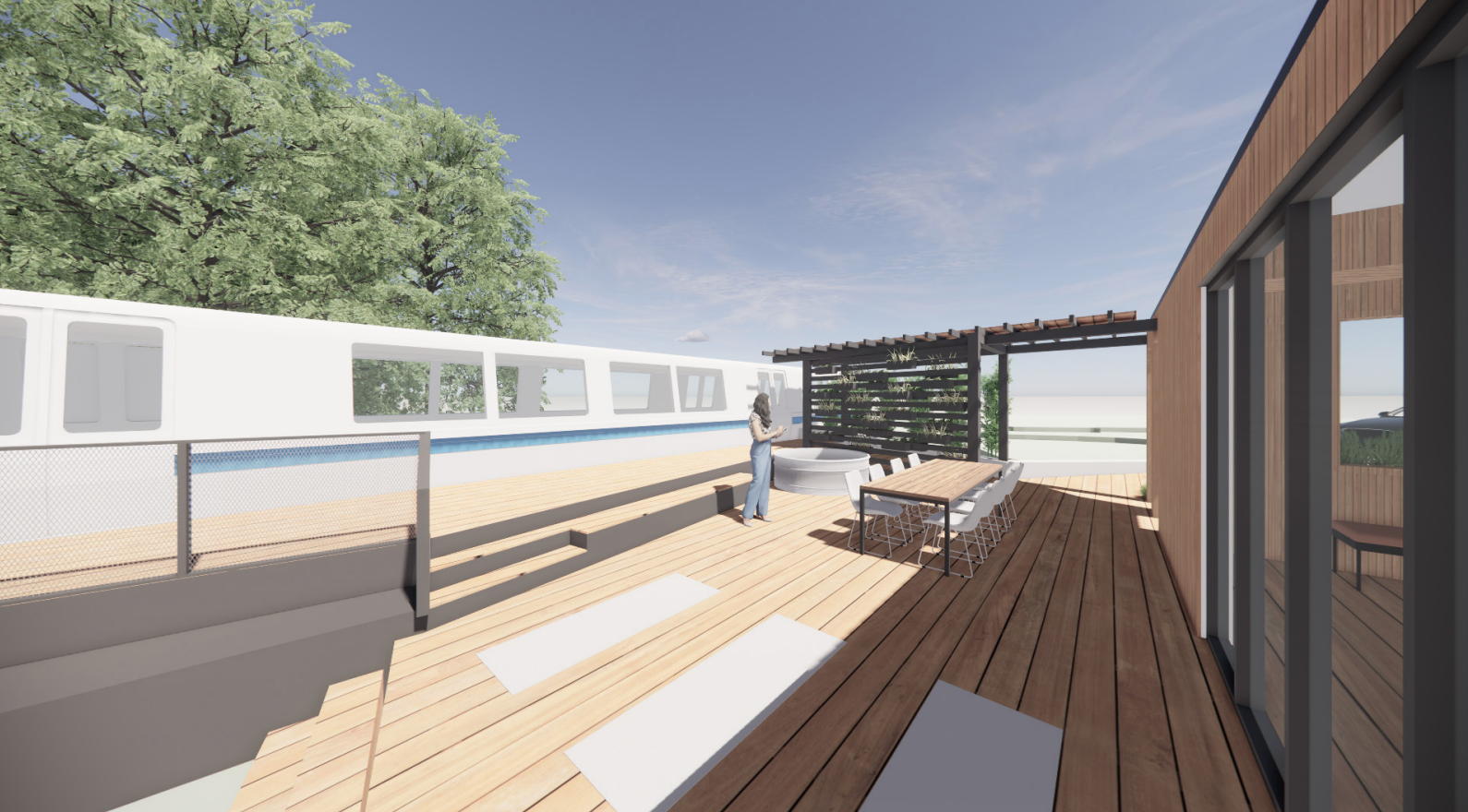Not all decommissioned BART trains go to choo-choo heaven. Sometimes, they go to the mountains instead.
When Bay Area Rapid Transit took 600 of its decades-old “legacy cars” out of service earlier this month,” most of them were destined for a date with a giant mechanical claw at an Oakland scrap yard, where they will be shredded to bits and recycled.
But a few will live on, mostly in museums, as a kind of a mothball fleet that used to carry commuters instead of sailors. At least one, however, will be trucked up to Gold Country and repurposed as a 75-foot-long, 9-foot-wide Airbnb rental.
Five years ago, East Bay financial adviser and transit aficionado Michael Lin learned about BART’s plans to replace its aging trains, and inquired as to how best to submit a proposal to procure an A2 car, capable of carrying 200 people in what BART calls a “crush load.”
Like ramen, rockabilly or the Roman Empire, vintage train preservation inspires a deep obsession in people. Railroad superfans typically treasure pre-1950 cabooses and Pullman cars. But retro-futuristic, 10-car-train-to-Millbrae workhorses? Not so much. Still, Lin was among the jubilant crowd during the legacy cars’ final passenger-service run this month. He hopes to take possession later this year, assuming early winter isn’t massively snowy.
Until the legacy fleet’s decommissioning, every single train that ever ran on BART’s trackage throughout its 51-year history was still in the agency’s possession. But it’s time to let a few go.
BART whittled the 20 initial submissions down to eight finalists. Two of those eight are East Bay fire departments who will use the cars for rescue drills and training. The Western Railway Museum got a few and Arthur Mac’s near MacArthur BART in Oakland is getting one, as are two other cafés and a nonprofit bike shop. That leaves two others: Lin and a professional sports franchise.
“The Oakland A’s got one—which they’re probably not going to use,” Lin said. “I got approved in early 2022 and, theoretically, by the end of this year, I’ll be able to take one. We wanted a front train, with a sloped nose.”
Everyone who shared his hunger for a piece of Bay Area transit history also had to demonstrate that they had a feasible plan to relocate a 60,000-pound train car. Estimates run to about $10,000 in crane rentals and other costs, even though the transit agency gave the cars away for free.
“They needed to make sure it wasn’t controversial,” Lin told The Standard. “They weren’t going to give you one if you wanted to dynamite it in the desert.”
BART administrators were charmed by Lin’s application, spokesperson Alicia Trost confirmed to The Standard, especially the reassurances that it was not a mere DIY project, but entrusted to an architectural team.
“We were hoping to see some tiny home proposals,” she said. “When we were reviewing what some people have done with retired rail cars, we had seen some successful Airbnbs around the country. We were secretly hoping someone would rise to the occasion and want to do this.”
Although he’s “not a hardcore train person by any means,” Lin studied architecture and largely plans to use his personal train car as a weekend getaway spot for his family, and as a part-time Airbnb—not so much as a moneymaker as a way to share it with the world.
How much would he charge per night?
“We’re still trying to figure out some of that, but we’re going to build a small house next to the train,” he said. “Both will be living spaces. It’s all meant to go together, but it should accommodate eight people.”
The area of an A2 train is about 700 square feet, and the companion house will be a little under 1,000 more, meaning the Sierra Train House project will include three or so rooms in total. It can’t be entirely Americans with Disabilities Act-compliant, since standard building ceilings are 7.5-feet high while trains are only 6-foot-9. And, of course, train cars don’t exactly come with plumbing hookups.
“We want to put a bathroom in the train, because it’d be horrible to wake up at 3 a.m. and go to the other house,” Lin said.
To schlep his train car to Gold Country, Lin will work with the same trucking company that BART contracts with—assuming the permits he pulled are approved. His property is rural enough that there aren’t many neighbors, and the one who’s already familiar with Lin’s plans is on board.
Lin hopes to start construction in March. Assuming that building will take a year or so, he’ll be guest-ready by spring 2025. By then, it will have been a seven-year process, with five years of waiting and filling out forms. And there’s still one big project that has to be done first.
“We have to get ready on our end and redo the driveway,” Lin said.
